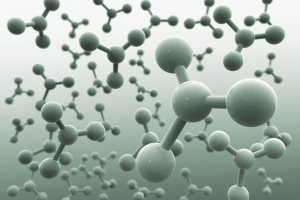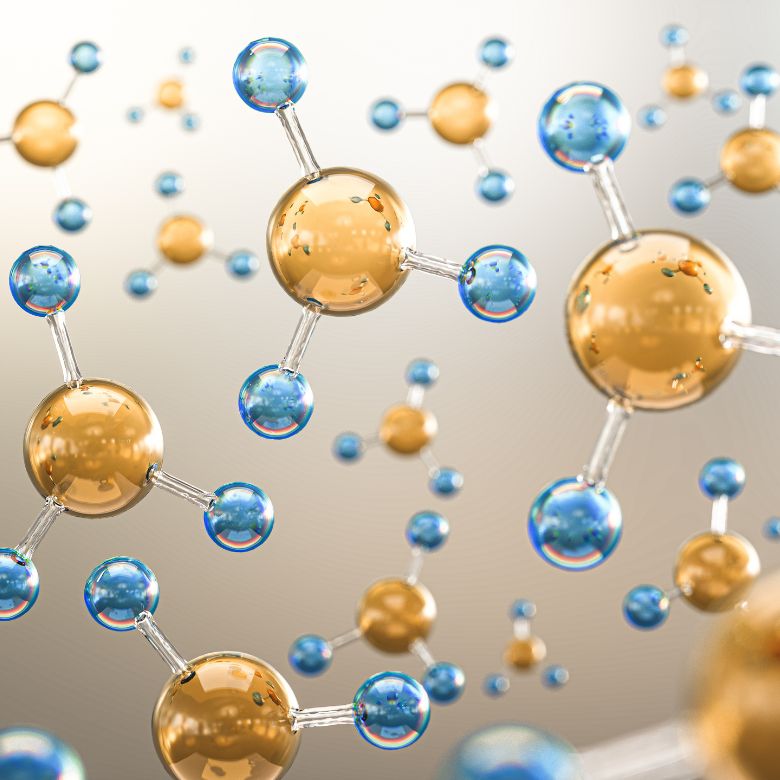Most chemical elements, with the exception of the noble gases, occur virtually only in the form of chemical compounds. Their formation occurs as a result of chemical reactions when atoms come close together. So let’s consider what they have in common and how this affects them.

Combination reactions
Reactions that produce chemical compounds can occur in two ways, depending on the atoms:
- Through repulsive interactions, which are a consequence of the overlap of electron shells and the electrostatic interaction of unipolar charges.
- Through the action of attractive forces caused by the electrostatic interaction of dissimilar charges, such as interactions between electrons and atomic nuclei or those resulting from changes in the distribution of charge densities.
It turns out that there is a tendency in nature to strive for minimal energy. This also applies to atoms, which is directly reflected precisely in their production of chemical bonds – atoms combine if it is energetically advantageous for them to do so. Most elements naturally bond their atoms to others or to each other.
Chemical bond
As mentioned earlier, atoms can combine with atoms of the same or another chemical element. A chemical bond is called such an interaction between atoms that makes them permanently bonded together. Valence electrons, present on the outermost shell of the atoms, are involved in the formation of chemical bonds.
Chemical bonding in two-atom hydrogen H2
Hydrogen is a chemical element and a substance whose atoms never exist in the free state. Its atoms are always paired by a specific chemical bond. It involves each of the hydrogen atoms present giving up one valence electron to be shared. This allows each of them to reach the most favourable energy state for itself and obtain the electron configuration of the noble gas closest to it in the periodic table, namely helium. Such shared electrons are known as a shared electron pair or electron-bonding pair. This type of bond occurring between hydrogen atoms can be symbolically represented as H:H.
Covalent bond
An excellent example of the occurrence of a covalent bond is the previously described two-atom hydrogen. It shares a common electron pair, which is specific to this type of bond. It involves the commonality of electrons and the formation of binding electron pairs that belong equally or differently to both atoms.
Non-polar covalent bond
Such covalent bonds, in which the binding electron pair belongs equally to both atoms, are also called atomic or non-polar covalent bonds and are mainly formed between atoms of the same non-metal. Such structures, which are formed by the formation of non-polar covalent bonds, are called homoatomic molecules.
Electrons of diatomic chlorine molecules Cl2
A non-polar covalent bond is also characteristic of the chlorine molecule, in which two chlorine atoms share one valence electron each, yielding an electron octet and an argon electron configuration. When considering the electrons present at both chlorine atoms in the molecule, it can be seen that, in addition to the binding electron pair, there are also electrons that are not directly involved in the formation of the chemical bond. Such electrons or pairs of electrons are called non-bonding electrons.

How is the nitrogen molecule structured?
It turns out that non-metals can share more than one electron pair. For example, a nitrogen molecule is made up of two nitrogen atoms. They each have five valence electrons on the last shell, making it necessary to have as many as three additional electrons to make an octet. To achieve the desired electron configuration, each nitrogen atom gives up three electrons to be shared. This results in three bonding electron pairs between the atoms. Such a specific bond has its own name – the triple bond. In addition to the shared electron pairs, each nitrogen atom has one non-bonding electron pair. The triple bond is the maximum possible for atoms to form. No chemical compounds have been found in nature that are characterised by the presence of more than three bonds in the molecule.
What about heteroatomic molecules?
Like atoms belonging to the same chemical element, atoms of different non-metals are able to bond to each other through the production of common bonding electron pairs. The most widely known example of such a structure is hydrogen chloride, a chemical compound formed by the combination of hydrogen and chlorine atoms. Each of the atoms that make up a molecule needs one electron to achieve the most favourable electron configuration for itself.
Covalent bond in the hydrogen chloride molecule
To achieve the electron configuration of the nearest noble gases, both hydrogen and chlorine donate one valence electron each to produce a bonding electron pair. This treatment results in two permanent electron configurations, with the hydrogen adopting the helium configuration and the chlorine atom adopting the argon configuration. Thus, on their valence shells there are a doublet and an electron octet, respectively.
However, we can observe a slightly different interaction here than in the case of the hydrogen molecule – it turns out that the electron pair generated between the hydrogen and chlorine atoms does not belong equally to them. It is shifted towards the one with the greater ability to attract electrons, in this case the chlorine atom, so the binding electron pair is shifted towards it. This type of bond is also a covalent bond, but additionally referred to as ‘polar’.

Polar covalent bond
Such a bond is formed between atoms belonging to different non-metals. They perform the characteristic movement of a covalent bond – they share some of their electrons, but compared to a non-polar covalent bond, the electron pairs produced in this case are shifted towards one of the atoms. The one which attracts electrons more strongly. It is usually the atom that has the greater number of electrons on its valence shell. It is always the atom that has the higher electronegativity.
Electron structure of the ammonia molecule
Ammonia is a molecule made up of one nitrogen atom and three hydrogen atoms. It has a polar covalent bond. Knowing that nitrogen belongs to group 15 of the periodic table of elements, we know that it has five valence electrons. In contrast, each hydrogen atom has only one electron. For a permanent electron configuration, nitrogen needs three electrons, which can be provided by the presence of hydrogen atoms. Each produces one bonding electron pair with a nitrogen atom. This ensures that each atom present has the most favourable electron configuration for itself. Because the nitrogen atom has a greater capacity to attract electrons than the hydrogen atom, all three binding electron pairs are shifted just towards it.
Electron structure of the carbon dioxide molecule
The carbon atom is in group 14 of the periodic table and therefore has four valence electrons on its valence shell. In contrast, each of the two oxygen atoms has six valence electrons. As the present atoms strive for octets only, the oxygen atoms give up two electrons to be shared, and the carbon atom shares two electrons with each, for a total of all four valence electrons to be shared. This results in as many as four binding electron pairs – two between the carbon atom and each oxygen atom. By comparing the electronegativity values of the carbon and oxygen atoms, we know that it is oxygen that shows a greater predisposition to attract electrons. Therefore, all four binding electron pairs are shifted towards the oxygen atoms.
How to check the type of bond present in a molecule?
A key factor in determining the type of bond present in a molecule is the electronegativity of its atomic constituents. It is the ability of atoms to attract electrons and, therefore, also in the case of covalent bonding, the ability to attract binding electron pairs to each other. The greater the value of the electronegativity, the more strongly the atom attracts electrons. Furthermore, the difference between the electronegativities of the atoms present in the molecule tells us what type of chemical bond we are dealing with. If, in a molecule, the difference in the electronegativity of the atoms building it, denoted as ΔE, is equal to 0.0 or no greater than 0.4, the bond is covalently unpolarised. If ΔE is between 0.4 and 1.6, there is a polar covalent bond in the molecule. If, on the other hand, the difference in the electronegativity of the atoms exceeds 1.6, this indicates the presence of an ionic bond.